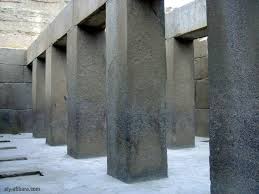Giza is most famous as the location of the Giza Plateau: the site of some of the most impressive ancient monuments in the world, including a complex of ancient Egyptian royal mortuary and sacred structures, including the Great Sphinx, the Great Pyramid of Giza, and a number of other large pyramids and temples.
The Great Pyramid of Giza was once advocated (1884) as the location for the Prime Meridian, a reference point used for determining a base longitude.[1]
1- History
Giza's most famous archaeological site, the Giza Plateau, holds some of the most astonishing monuments in Egyptian history. Once thriving with the Nile that flowed right into the Giza Plateau, the Pyramids of Giza were built overlooking the ancient Egyptian capital of Memphis, which was near modern day Cairo.
The Giza Plateau is also home to many other Ancient Egyptian monuments, including the tomb of Pharaoh Djet of the First dynasty, as well as that of Pharaoh Ninetjer of the Second dynasty.
The city itself has seen some changes over time. Changes in infrastructure during the different occupations of Egypt by various rulers, including the British in the 19th and early 20th century, focused on the construction of roads, streets, and buildings in the area. It is commonly misunderstood that the Giza area is a complete desert area; however, Giza has become a thriving centre of Egyptian culture and is quite heavily populated, with many facilities and buildings in the current area. Giza saw much attention in particular to its vast amount of ancient Egyptian monuments found on the Giza Plateau, and has astonished thousands of visitors and tourists over the years. Giza's infrastructure saw much attention from both the British government prior to the 1952 coup d'etat, as well as the current Egyptian government due to the city's importance in tourism.
Parts of Giza include el Haram, famous for its night clubs, Zamalek, predominantly populated by middle class Egyptians and el Mohandeseen.
2- Gallery








